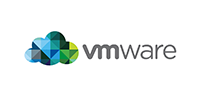Description
This intensive training focuses on the installation, configuration and management of VMware vSphere 7 which includes VMware ESXI and VMware vCenter. The training equips participants with the skills and knowledge to administer a vSphere virtualization infrastructure for an organization of any size.
Who is this training for ?
For whom ?This training is aimed at system administrators and engineers working in the VMware virtualization environment. It may also be suitable for professionals who have completed equivalent training on an old version of the product (up to version 6).
Prerequisites
Having
experience on Microsoft Windows or Linux systems
Training objectives
Training program
- Introduction à vSphere et Software-Defined Data Center
- Describe how vSphere integrates with software-defined data center and cloud infrastructure
- Explain how vSphere interacts with CPU memory, networking, and storage
- Use the vSphere Client to access and manage your vCenter Server system and ESXi hosts
- Compare version 14 virtual machine hardware to previous versions
- Identify virtual network adapters and describe enhanced VMXNET3
- Compare the types of virtual disks provided
- Identify the benefits of ESXi Quick Start
- Creation of virtual machines (VMs)
- Create and delete a virtual machine
- Explain the importance of VMware tools
- Describe how to import an OVF virtual application template
- Manage Vmware tools
- Explain OS installation troubleshooting and VMware tools
- VCenter Server
- Introduce the architecture of vCenter Server
- Discuss how to communicate ESXi hosts with vCenter Server
- Identify vCenter services, components and modules
- Configure the vCenter Server appliance
- Use the vSphere client to manage vCenter Server inventory
- Describe rules for applying permissions
- Create a custom role in vCenter Server
- Create a backup schedule
- Restore the appliance vCenter Server from backup
- Monitor vCenter Server appliance
- Configuring and managing virtual networks
- Introduce the architecture of vCenter Server
- Discuss how to communicate ESXi hosts with vCenter Server
- Identify vCenter services, components and modules
- Configure the vCenter Server appliance
- Use the vSphere client to manage vCenter Server inventory
- Describe rules for applying permissions
- Create a custom role in vCenter Server
- Create a backup schedule
- Restore the appliance vCenter Server from backup
- Monitor vCenter Server appliance
- Configuring and managing virtual storage
- Introduce storage protocols and types of storage architectures
- Introduce ESXi hosts via iSCSI, NFS, and Fiber Channel storage
- Create and manage VMFS and NFS datastores
- Describe the new features of VMFS 6.5
- Advantages of virtual SAN
- Describe the encryption of VM files
- Virtual machine management
- Use templates and cloning to deploy new VMs
- Modify and manage virtual machines
- Clone a virtual machine
- Update a VM's hardware to version 14
- Delete VMs from the vCenter Server inventory and datastore
- Customize a new VM via customization of specification files
- Improve vSphere vMotion and vSphere Storage vMotion migrations
- Create and manage VM snapshots
- Create, clone, and export vApps
- Create, clone, and export vApps
- Introduce the types of content libraries, how to deploy and use them
- VSphère DRS
- Describe the features and benefits of the vSphere DRS cluster
- Create a vSphere DRS cluster
- View DRS cluster information
- Configure host VM Affinity VMs, DRS groups, and Affinity rules
- Remove a host from a DRS cluster
- VSphere Update Manager
- New vSphere Update Manager architecture, architecture, components and capabilities
- Use vSphere Update Manager to manage ESXi, virtual machines and VMware Appliances
- Install vSphere Update Manager and the vSphere Update Manager plugin
- Create baselines
- Use host profiles to manage compliance host configuration
- Review the features and functions of the vSphere Update Manager EAM integration
- Integrate vSphere Update Manager with vSphere DRS
- Scan and fix hosts
- VSphere HA and fault tolerance
- Explain the vSphere HA architecture
- Configure and manage a vSphere HA cluster
- Use vSphere HA advanced settings
- Reinforce infrastructure or intra-app dependencies during cutover
- Describe the “Network Heartbeat” and “Datastore Heartbeat”
- Introduce the vSphere fault tolerance features and functions
- Make fault tolerance available on virtual machines
- Support fault tolerance interoperability with SANs virtual machines
- Examine virtual machine fault tolerance enhancements
- Introduce the features and functions of vSphere replication






